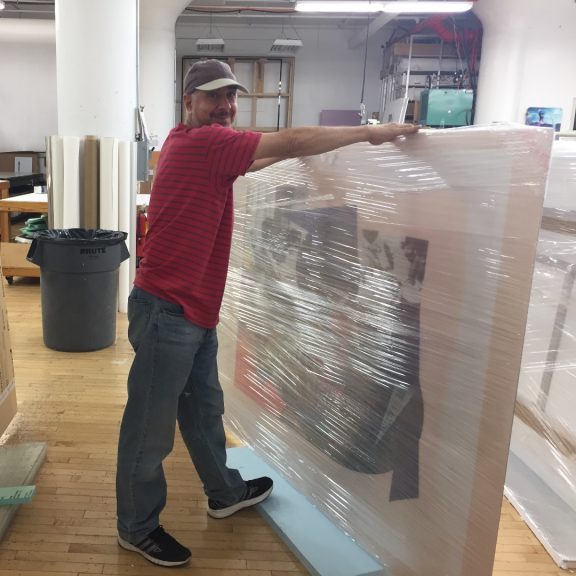
If you have ever had to pack a work of art for shipping or seen professional art handlers do it, you have probably noticed the number of required materials. The thing is, art packing is a meticulous task that demands you to calculate every single possible scenario and prepare for it. Today, you will learn about three main types of fine art packaging supplies and what they are utilized for.
Three Purposes of Fine Art Packaging Supplies Used by Professionals
Think about art packing in terms of layers of protection. Usually, the acid-free layer comes first. Expert art shippers always make sure that the materials coming in direct contact with the work of art have a neutral PH level. Art plastic and glassine paper are some of the most widely used examples of such materials: they are moisture and air-resistant, preventing the outside world influences from interacting with the fragile surface of an artwork. This essential fine art packaging layer cannot be substituted with anything else.
Next, there are cushioning materials such as bubble wrap. They are used to fill in the space in a box to prevent the piece from sliding around and to protect it from getting damaged from bumps in the road, getting dropped, or any other sort of rough treatment. Never put a painting or a sculpture in a box without any cushioning materials. It will not withstand the dangers of transportation because there will be nothing between the piece and the outer layer. At the same time, simply wrapping items in soft materials is not enough.
This is where the outer layer comes into play. Think of it as a carcass of your packaging. This can be a box or anything else you are using to ship your artwork. It is crucial to make sure that a cardboard box is not torn or dented. For some pieces that require a little bit more protection than simple cardboard, art shipping crates made of wood are a great option. Building an art crate by yourself might be challenging, so consider getting one from professional art movers.
Now that you know what fine art packaging consists of, you can pack your artwork properly. Remember that each layer is important and has its distinct purpose.
